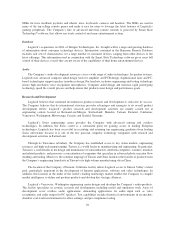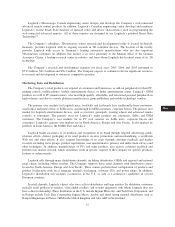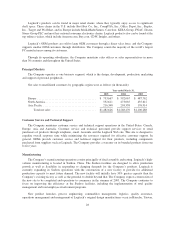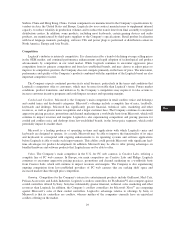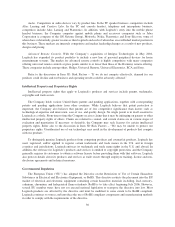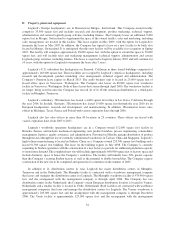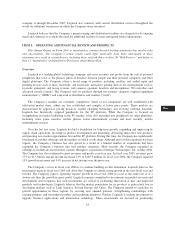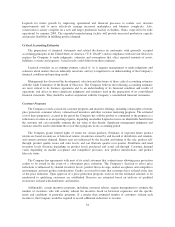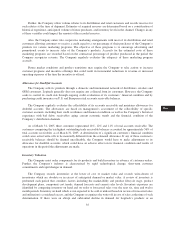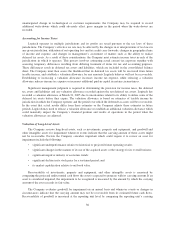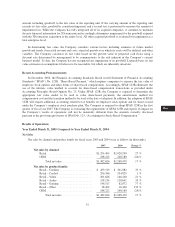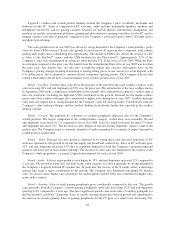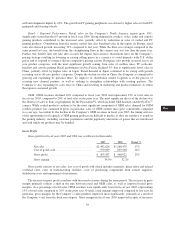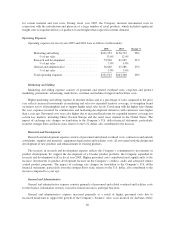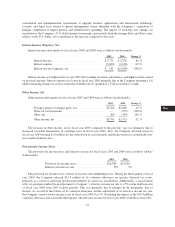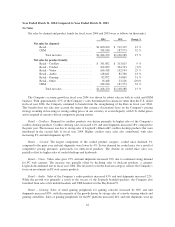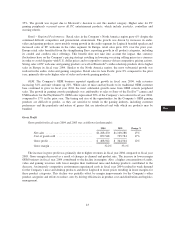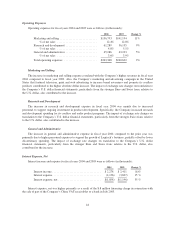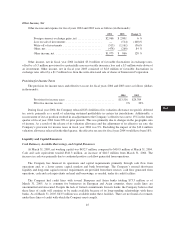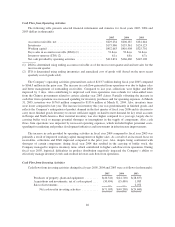Logitech 2005 Annual Report Download - page 74
Download and view the complete annual report
Please find page 74 of the 2005 Logitech annual report below. You can navigate through the pages in the report by either clicking on the pages listed below, or by using the keyword search tool below to find specific information within the annual report.unanticipated change in technological or customer requirements, the Company may be required to record
additional write-downs which could adversely affect gross margins in the period when the write-downs are
recorded.
Accounting for Income Taxes
Logitech operates in multiple jurisdictions and its profits are taxed pursuant to the tax laws of these
jurisdictions. The Company’s effective tax rate may be affected by the changes in or interpretations of tax laws in
any given jurisdiction, utilization of net operating loss and tax credit carry forwards, changes in geographical mix
of income and expense, and changes in management’s assessment of matters such as the ability to realize
deferred tax assets. As a result of these considerations, the Company must estimate income taxes in each of the
jurisdictions in which it operates. This process involves estimating actual current tax exposure together with
assessing temporary differences resulting from differing treatment of items for tax and accounting purposes.
These differences result in deferred tax assets and liabilities, which are included in the consolidated balance
sheet. The Company must then assess the likelihood that its deferred tax assets will be recovered from future
taxable income, and establish a valuation allowance for any amounts Logitech believes will not be recoverable.
Establishing or increasing a valuation allowance increases income tax expense, while releasing a valuation
allowance reduces income tax expense or increases additional paid-in capital in certain circumstances.
Significant management judgment is required in determining the provision for income taxes, the deferred
tax assets and liabilities and any valuation allowance recorded against the net deferred tax assets. Logitech has
recorded a valuation allowance at March 31, 2005 due to uncertainties related to its ability to utilize some of the
deferred tax assets before they expire. The valuation allowance is based on estimates of taxable income by
jurisdiction in which the Company operates and the period over which the deferred tax assets will be recoverable.
In the event that actual results differ from these estimates or the Company adjusts these estimates in future
periods, Logitech may need to release a valuation allowance or establish an additional valuation allowance which
could materially impact the Company’s financial position and results of operations in the period when the
valuation allowances are adjusted.
Valuation of Long-Lived Assets
The Company reviews long-lived assets, such as investments, property and equipment, and goodwill and
other intangible assets for impairment whenever events indicate that the carrying amount of these assets might
not be recoverable. Factors the Company considers important which could require it to review an asset for
impairment include the following:
• significant underperformance relative to historical or projected future operating results;
• significant changes in the manner of its use of the acquired assets or the strategy for its overall business;
• significant negative industry or economic trends;
• significant decline in its stock price for a sustained period; and
• its market capitalization relative to net book value.
Recoverability of investments, property and equipment, and other intangible assets is measured by
comparing the projected undiscounted cash flows the asset is expected to generate with its carrying amount. If an
asset is considered impaired, the impairment to be recognized is measured by the amount by which the carrying
amount of the asset exceeds its fair value.
The Company evaluates goodwill for impairment on an annual basis and whenever events or changes in
circumstances indicate that the carrying amount may not be recoverable from its estimated future cash flows.
Recoverability of goodwill is measured at the reporting unit level by comparing the reporting unit’s carrying
36


